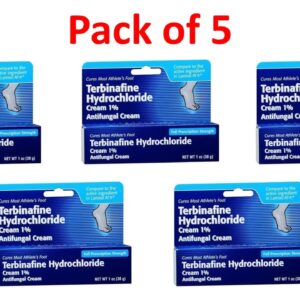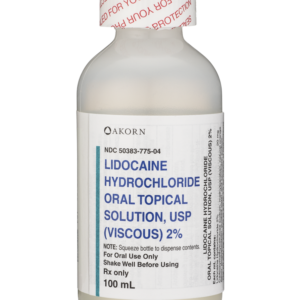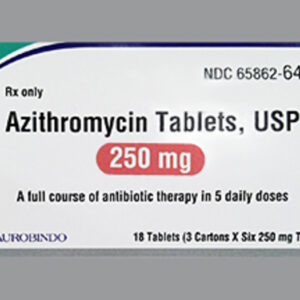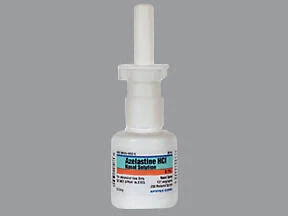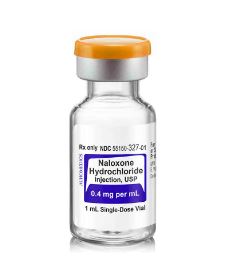Delivery Method: VIA UPS Reference #: 320-26-10 Product: Drugs Recipient:
Recipient Name
Ms. Ivania S. Gutierrez
Recipient Title
President
World Perfumes Inc.
2360 NW 150th Street
Opa-Locka, FL 33054-2706
United States
Issuing Office: Center for Drug Evaluation and Research (CDER)
United States
Warning Letter 320-26-10
October 29, 2025
Dear Ms. Gutierrez:
The United States Food and Drug Administration (FDA) inspected your drug manufacturing facility, World Perfumes Inc., FEI 3009971047, at 2360 NW 150th Street, Opa-Locka, from May 5 to 9, 2025.
This warning letter summarizes significant violations of Current Good Manufacturing Practice (CGMP) regulations for finished pharmaceuticals. See Title 21 Code of Federal Regulations (CFR), parts 210 and 211 (21 CFR parts 210 and 211).
Because your methods, facilities, or controls for manufacturing, processing, packing, or holding do not conform to CGMP, your drug products are adulterated within the meaning of section 501(a)(2)(B) of the Federal Food, Drug, and Cosmetic Act (FD&C Act), 21 U.S.C. 351(a)(2)(B).
We reviewed your May 29, 2025, response to our Form FDA 483 in detail and acknowledge receipt of your subsequent correspondence.
During our inspection, our investigator observed specific violations including, but not limited to, the following.
1. Your firm failed to conduct at least one test to verify the identity of each component of a drug product (21 CFR 211.84(d)(1)).
Your firm manufactures over-the-counter (OTC) oral and topical drug products. You failed to perform adequate identity testing on each shipment of each lot of incoming components (e.g., ethanol, glycerin) used in the manufacture of your OTC oral and topical drug products.
Products Contain Ethanol
You manufacture multiple drugs that contain ethanol (e.g., ethanol, ethyl alcohol, alcohol). You failed to adequately test your incoming component ethanol for methanol. The use of ethanol contaminated with methanol has resulted in various lethal poisoning incidents in humans worldwide. See FDA’s guidance document Policy for Testing of Alcohol (Ethanol) and Isopropyl Alcohol for Methanol at https://www.fda.gov/media/173005/download.
Additionally, you failed to demonstrate that the component alcohol, used to manufacture your drug products, met United States Pharmacopoeia (USP) monograph specifications including those for impurities (e.g., acetaldehyde, acetal, benzene). For example, when we reviewed your raw material specification for your component alcohol, we noted that the specifications failed to demonstrate performance of the USP monograph identification part C, and reference incorrect acceptance ranges for part A, the specific gravity test. Furthermore, you used nonpharmaceutical-grade ethanol to manufacture your drug products.
In your response, you state that you will test current samples of the nonpharmaceutical-grade ethanol. Your response is inadequate because you do not provide adequate details to demonstrate that your identity testing meets all compendial requirements, and how you will ensure that appropriate incoming testing will be performed for each component. Additionally, you do not propose testing retain samples or otherwise conduct an analysis of previously used drug product components to ensure that all quality attributes were met.
Products Contain Ingredients at Risk for Diethylene Glycol or Ethylene Glycol (DEG or EG) Contamination
You also failed to adequately test your incoming components at high risk of DEG or EG contamination for identity before using them to manufacture your drug products. This includes, but is not limited to, testing of glycerin to determine its appropriate identity before using it in manufacturing your OTC oral and topical drug products.
The use of ingredients contaminated with DEG or EG has resulted in various lethal poisoning incidents in humans worldwide. See FDA’s guidance document Testing of Glycerin, Propylene Glycol, Maltitol Solution, Hydrogenated Starch Hydrolysate, Sorbitol Solution, and Other High-Risk Drug Components for Diethylene Glycol and Ethylene Glycol to help you meet the CGMP requirements when manufacturing drugs containing ingredients at high-risk for DEG or EG contamination at https://www.fda.gov/media/167974/download.
Identity testing for glycerin and certain other high-risk drug components includes a limit test in the USP to ensure that the component meets the relevant safety limits for DEG or EG levels. Because you did not perform identity testing on each shipment of each lot using the USP identification test that detects these hazardous impurities, you failed to ensure the acceptability of these components for use in the manufacture of your drug products.
In your response, you state that you will test excipients in the future to determine if they are within expected specifications and free from “high-risk contaminants.” Again, your response is inadequate because you do not provide adequate details to demonstrate that your components meet all compendial requirements or impact to product on the market.
Without adequate testing, you do not have scientific evidence that the components conform to the appropriate specifications before their use in the manufacture of your drug products. You are responsible for sampling, testing, and examining drug components before their use in production to ensure that acceptable quality parameters are met.
In response to this letter, provide:
- A comprehensive, independent review of your material system to determine whether all suppliers of components, containers, and closures, are each qualified and the materials are assigned appropriate expiration or retest dates. The review should also determine whether incoming material controls are adequate to prevent use of unsuitable components, containers, and closures.
- A summary of your program for qualifying and overseeing contract facilities that test the drug products you manufacture.
- The chemical quality control specifications you use to test each incoming lot of high-risk drug components to determine acceptability for use in manufacturing.
- A description of how you will test each component lot for conformity with all appropriate specifications for identity, strength, quality, and purity. If you intend to accept any results from your supplier’s certificate of analysis (COA) instead of testing each component lot for strength, quality, and purity, specify how you will robustly establish the reliability of your supplier’s results through initial validation as well as periodic revalidation. In addition, include a commitment to always conduct at least one specific identity test for each incoming component lot. In the case of glycerin, propylene glycol, and certain additional high-risk components we note that this includes the performance of parts A, B. and C of the USP monograph.
- A summary of results obtained from testing all components to evaluate the reliability of the COA from each component manufacturer. Include your standard operating procedure (SOP) that describes this COA validation program.
- A commitment to provide methanol test results, no later than 30 calendar days from the date of this letter, from testing retains for all lots of components within expiry of manufactured drug products. Alternatively, if a retain of a component lot is unavailable, perform retain sample testing of all implicated finished drug product batches for the presence of methanol.
- A commitment to provide DEG and EG test results, no later than 30 calendar days from the date of this letter, from testing retains for all lots of high-risk drug components used in the manufacture of drug products. Alternatively, if a retain of a component lot is unavailable, perform retain sample testing of all implicated finished drug product batches for the presence of DEG and EG.
- A full risk assessment for drug products that are within expiry which contain any ingredient at risk for DEG or EG contamination (including, but not limited to, glycerin). Take prompt and appropriate actions to determine the safety of all lots of the component(s) and any related drug product that could contain DEG or EG, including customer notifications and product recalls for any contaminated lots. Identify additional appropriate corrective action and preventive action (CAPA) that secure supply chains in the future, including, but not limited to, ensuring that all incoming raw material lots are from fully qualified manufacturers and free from unsafe impurities. Detail these actions in your response to this letter.
2. Your firm failed to use equipment in the manufacture, processing, packing, or holding of drug products that is of appropriate design, adequate size, and suitably located to facilitate operations for its intended use and for its cleaning and maintenance. Your firm also failed to establish adequate written procedures for production and process control designed to assure that the drug products you manufacture have the identity, strength, quality, and purity they purport or are represented to possess (21 CFR 211.63 and 21 CFR 211.100(a)).
Your firm uses water as a component to manufacture your OTC oral and topical drug products. You failed to adequately design your water system to ensure that it was suitable for producing the water used in the formulation of your drug products. For example, your water system is (b)(4) and has dead-legs located at each point-of-use in the production area. Stagnant water can foster the development of biofilms. Moreover, your water system cannot be adequately sanitized because of the (b)(4) piping in its design.
In addition, you failed to demonstrate that your water system is adequately monitored to ensure that it consistently produces water that meets appropriate microbial limits. You lacked appropriate testing and representative sampling to ensure that the (b)(4) water used as a component in your drug products is suitable for the intended use. Specifically, you did not perform adequate testing for objectionable microorganisms in your (b)(4) water (e.g., Burkholderia cepacia complex (BCC)) or sample your manufacturing points-of-use.
In your response, you state that you will update your SOP regarding water system sampling locations with the addition of another sampling port, maintenance of hoses, and additional testing for chemical and microbial attributes. Your response is inadequate because it did not demonstrate that your water system is of adequate design, control, maintenance, and monitoring to consistently produce water suitable for its intended use as a component in your drug products. You also did not assess the impact of using water from your water system on the quality of drug products you manufactured.
Your (b)(4) water system must be adequately designed and properly maintained to minimize and control the potential for contamination. (b)(4) water must be suitable for its intended use and routinely tested at an adequate frequency to ensure ongoing conformance with appropriate chemical and microbiological attributes.
Inadequate design, control, and/or maintenance of (b)(4) water systems have led to contamination with BCC and other water-borne opportunistic pathogens. For further information regarding the significance of BCC contamination of non-sterile, water-based drug products, see FDA’s advisory notice at https://www.fda.gov/drugs/drug-safety-and-availability/fda-advises-drug-manufacturers-burkholderia-cepacia-complex-poses-contamination-risk-non-sterile.
Moreover, your firm has failed to adequately validate your alternative (b)(4) microbiological test method for water samples. For example, you use the (b)(4) Microbiology System to test your drug products and water samples. You did not perform a suitability study of your water samples to demonstrate that the chosen test media and incubation conditions are appropriate for bioburden recovery of your water system’s microbiome.
Your response is inadequate because you did not provide test data to support your alternative test method or commit to performing a suitability study; instead, you are performing a trend analysis.
A complete method validation of alternative microbiological methods includes the validation of the alternative technology, method suitability, and a determination of the test method’s ability to produce equivalent or better results than the compendial method. This complete method validation should be completed for the alternative test method performed on both finished drug products and water samples.
Routine and representative monitoring of microbial counts and identification of contamination in the system are integral to maintaining a state of control and the suitability of water used in manufacturing operations.
In response to this letter, provide:
- A comprehensive, independent assessment of your water system design, control, and maintenance. A third-party consultant with relevant expertise in water systems for (b)(4) use should assist you in conducting this comprehensive evaluation.
- A thorough remediation plan to install and operate a suitable water system. Include a robust ongoing control, maintenance, and monitoring program to ensure the remediated system design consistently produces water adhering to (b)(4) Water, (b)(4) monograph specifications and appropriate microbial limits.
- Regarding the latter, ensure that your total microbial count limit for water is appropriate in view of the intended use of the products produced by your firm.
- A detailed risk assessment addressing the potential effects of the observed water system failures on the quality of all drug product lots currently in U.S. distribution. Specify actions that you will take in response to the risk assessment, such as customer notifications and product recalls.
- A procedure for your water system monitoring that specifies routine microbial testing of water to ensure its acceptability for use in each batch of drug products produced by your firm.
- The current action/alert limits for total counts and objectionable organisms used for your (b)(4) Water system. Ensure that the total count limits for your (b)(4) water are appropriately stringent in view of the intended use of each of the products produced by your firm.
- A procedure governing your program for ongoing control, maintenance, and monitoring that ensures the remediated system consistently produces water that meets (b)(4) Water, (b)(4) monograph specifications and appropriate microbial limits.
- A (b)(4) water system validation protocol and report.
- Validation of your microbiological test methods, including growth promotion testing, demonstrating that these test methods are equivalent to or better than USP compendial methods and are suitable for their intended use.
Cosmetics Manufactured for Distribution in the United States
In addition, some of the products you manufacture may be regulated as cosmetics, as defined in section 201(i) of the FD&C Act [21 U.S.C. 321(i)]. Any cosmetics you manufacture must comply with applicable statutory and regulatory requirements, including the FD&C Act. We note that under section 301(a) of the FD&C Act [21 U.S.C. 331(a)], it is a prohibited act to introduce or deliver for introduction into interstate commerce a cosmetic that is adulterated or misbranded.
We also note that the Modernization of Cosmetics Regulation Act of 2022 (MoCRA) provides new requirements with which facilities that manufacture cosmetic products must comply. You may find the FD&C Act, MoCRA, and FDA’s regulations through links on FDA’s website at www.fda.gov.
Quality Systems
Significant findings in this letter demonstrate that your firm does not operate an effective quality system in accord with CGMP. In addition to the lack of effective management oversight of your production operations, we found your quality unit is not enabled to exercise proper authority and/or has insufficiently implemented its responsibilities. Executive management should immediately and comprehensively assess your company’s global manufacturing operations to ensure that your systems, processes, and products conform to FDA requirements.
Your firm’s quality systems are inadequate. See FDA’s guidance document Quality Systems Approach to Pharmaceutical CGMP Regulations for help implementing quality systems and risk management approaches to meet the requirements of CGMP regulations 21 CFR, parts 210 and 211 at https://www.fda.gov/media/71023/download.
Responsibilities as a Contractor
Drugs must be manufactured in conformance with CGMP. FDA is aware that many drug manufacturers use independent contractors such as production facilities, testing laboratories, packagers, and labelers. FDA regards contractors as extensions of the manufacturer.
You are responsible for the quality of drugs you produce as a contract facility regardless of agreements in place with product owners. You are required to ensure that drugs are made in accordance with section 501(a)(2)(B) of the FD&C Act for safety, identity, strength, quality, and purity. See FDA’s guidance document Contract Manufacturing Arrangements for Drugs: Quality Agreements at https://www.fda.gov/media/86193/download.
CGMP Consultant Recommended
Based upon the nature of the violations we identified at your firm, you should engage a consultant qualified as set forth in 21 CFR 211.34 to assist your firm in meeting CGMP requirements. Your use of a consultant does not relieve your firm’s obligation to comply with CGMP. Your firm’s executive management remains responsible for resolving all deficiencies and systemic flaws to ensure ongoing CGMP compliance.
Conclusion
The violations cited in this letter are not intended to be an all-inclusive list of violations that exist at your facility. You are responsible for investigating and determining the causes of any violations and for preventing their recurrence or the occurrence of other violations.
Correct any violations promptly. Failure to promptly and adequately address this matter may result in regulatory or legal action without further notice including, without limitation, seizure and injunction. Unresolved violations may also prevent other Federal agencies from awarding contracts.
Failure to address violations may also cause FDA to withhold issuance of Export Certificates. FDA may withhold approval of new applications or supplements listing your firm as a drug manufacturer until any violations are completely addressed and we confirm your compliance with CGMP. We may re-inspect to verify that you have completed corrective actions to address any violations.
This letter notifies you of our findings and provides you an opportunity to address the above deficiencies. After you receive this letter, respond to this office in writing within 15 working days. Specify what you have done to address any violations and to prevent their recurrence. In response to this letter, you may provide additional information for our consideration as we continue to assess your activities and practices. If you cannot complete corrective actions within 15 working days, state your reasons for delay and your schedule for completion.
Send your electronic reply to CDER-OC-OMQ-Communications@fda.hhs.gov. Identify your response with FEI 3009971047 and ATTN: Sena G. Dissmeyer.
Sincerely,
/S/
Francis Godwin
Director
Office of Manufacturing Quality
Office of Compliance
Center for Drug Evaluation and Research

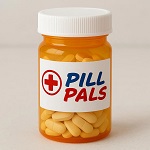 Our Pill Pass® Drug List is only $6.99 or less and Shipping is FREE!
Our Pill Pass® Drug List is only $6.99 or less and Shipping is FREE!


